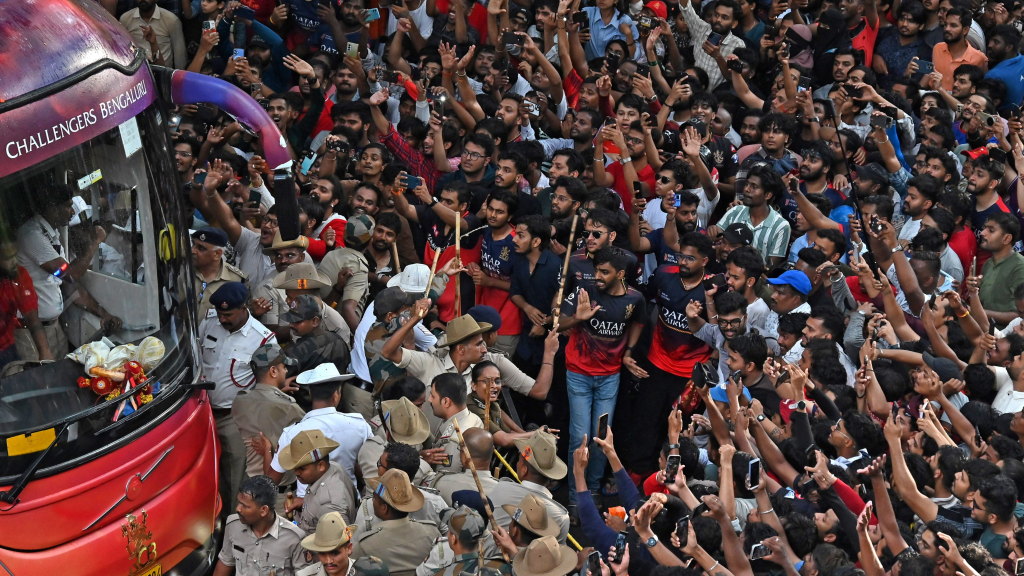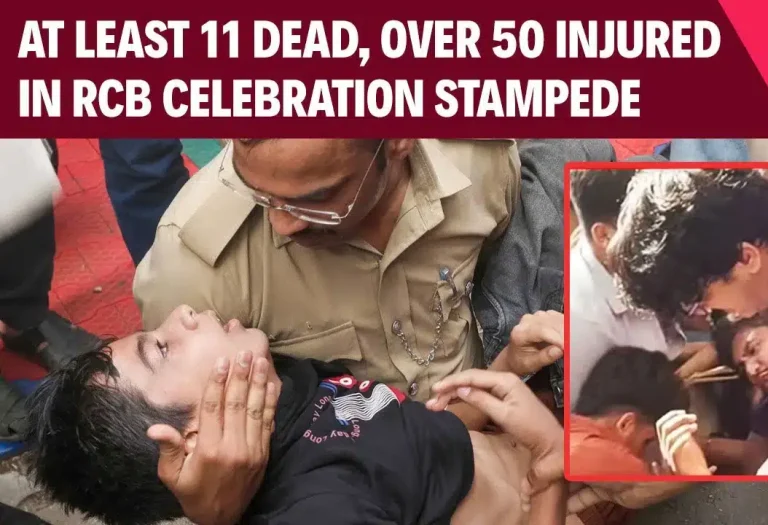The city of Bengaluru was set to witness a moment of unbridled joy as Royal Challengers Bengaluru (RCB) celebrated their first-ever Indian Premier League (IPL) title with a grand victory parade on June 4, 2025. What began as a jubilant occasion quickly spiraled into tragedy, as a stampede near the M Chinnaswamy Stadium resulted in the deaths of 11 people and left dozens injured.
RCB’s Maiden Title and the Planned Celebrations
RCB’s long-awaited triumph came after an 18-year drought, with the team clinching the IPL 2025 title in a thrilling final against the Punjab Kings. The victory unleashed a wave of emotion across Bengaluru, with fans eager to celebrate alongside their cricketing heroes. The official victory parade was announced to begin at 3:30 PM IST, starting from Vidhana Soudha and culminating at the iconic M Chinnaswamy Stadium—a 1.4 km route through the heart of the city.
The event promised to be a spectacle, with RCB’s stars, including Virat Kohli, AB de Villiers, and Chris Gayle, expected to participate. Security was reportedly heightened along the parade route, and city officials anticipated a massive turnout as the city erupted in red-and-gold euphoria.
How the Tragedy Unfolded

Despite the anticipation and elaborate preparations, several critical missteps led to disaster:
- Conflicting Announcements: While RCB’s official social media accounts promoted the parade and urged fans to gather, Bengaluru traffic police had earlier announced that the parade was cancelled due to security concerns. The conflicting messages created confusion, with fans converging in large numbers, many unaware of the cancellation.
- Overwhelming Crowd: Tens of thousands—possibly lakhs—of fans gathered within a kilometre radius of the stadium. The crowd swelled as fans pushed towards multiple gates of the Chinnaswamy Stadium, hoping to witness the celebrations up close.
- Lack of Crowd Control: Despite a heavy police presence, crowd management was inadequate. Panic spread as people surged forward, leading to chaos at the stadium’s entrances. Eyewitnesses described desperate scenes, with people climbing trees and gates to escape the crush.
- Ignored Warning Signs: Hours before the stampede, there were visible and actionable signs of overcrowding and mismanagement, but these were not addressed in time.
The Aftermath: Casualties and Response

The stampede resulted in the deaths of at least 11 people, including a child, and left around 50 others injured. Victims were rushed to nearby hospitals, including Bowring and Lady Curzon Hospital, as authorities scrambled to respond. The tragedy cast a shadow over the celebrations, with the felicitation event at the stadium abruptly cut short as news of the incident spread.
Karnataka’s Chief Minister Siddaramaiah called for accountability, stating that event organizers should be arrested and top police officials suspended in light of the mismanagement that led to the disaster.
Key Factors Behind the Tragedy
The incident has been attributed to a combination of factors:
- Conflicting and unclear communication regarding the parade’s status.
- Underestimation of crowd size and inadequate crowd-control measures.
- Failure to act on visible warning signs of overcrowding and panic.
- Inadequate coordination between event organizers and law enforcement.
Conclusion
What should have been a historic day of celebration for RCB and their fans turned into a somber reminder of the perils of large public gatherings without proper planning and crowd management. The tragedy has sparked a debate on accountability and the urgent need for better safety protocols at major public events in India. As Bengaluru mourns the loss of 11 lives, the city—and the country—must reflect on the lessons to prevent such disasters in the future.

